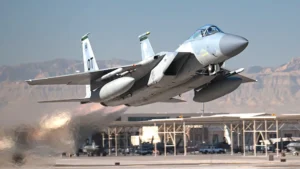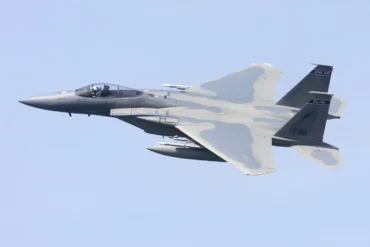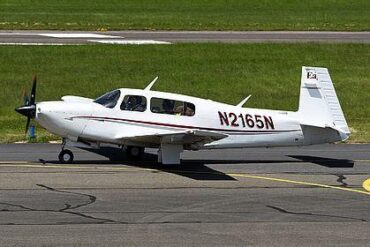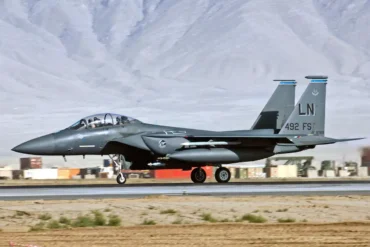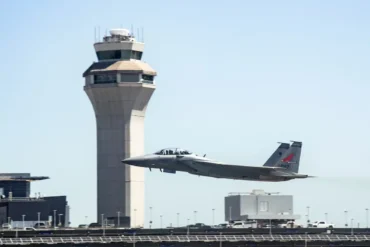The F-15 Eagle, a renowned fighter jet, stands as a symbol of air superiority with its advanced armament systems designed for both air-to-air and air-to-ground missions. Through its long history of service in various military branches across the globe, the F-15 has proven time and again to be a formidable weapon system. In this article, we explore in great detail the armament capabilities of the F-15C, shedding light on its various weapon systems, ammunition, hardpoints, and overall operational flexibility.
Introduction to the F-15 Eagle’s Armament System
The F-15C, an integral part of the F-15 family, was specifically designed to achieve air dominance. Unlike many multi-role fighter jets, the F-15C is specialized in interception and air-to-air combat. Its armament system reflects this focus, providing it with a highly versatile and potent suite of weapons that give it unparalleled flexibility in combat situations.
The armament capabilities of the F-15C are a balance of offensive firepower, defensive tools, and the flexibility to adapt to a wide variety of combat scenarios. From its M61A1 Vulcan cannon to a combination of missiles, external fuel tanks, and decoy systems, the F-15C is designed to dominate the skies.
The M61A1 Vulcan Gun: A Close-Range Precision Tool
At the core of the F-15C’s air-to-air offensive capability is the M61A1 Vulcan, a 20 mm rotary cannon that has become synonymous with close-range combat. The M61A1 is a 6-barrel, aircraft-mounted cannon capable of firing up to 6,000 rounds per minute. The F-15C carries 940 rounds of ammunition, giving it the ability to engage enemy aircraft in high-speed dogfights or provide precision hits during low-altitude engagements.
This cannon is extremely effective in quick, close-range situations where missiles may not be viable due to range or targeting limitations. The Vulcan provides the pilot with a means of engaging smaller, faster targets or when missile systems fail or are exhausted.
Key Features of the M61A1 Vulcan:
- Rate of fire: 6,000 rounds per minute
- Ammunition: 940 rounds
- Type: 20mm (0.787 in) high-velocity shells
- Targeting: Ideal for close-quarters combat and high-speed intercepts
Hardpoints and Payload Capacity
The F-15C features 9 hardpoints strategically placed around the airframe to maximize payload flexibility. These hardpoints consist of two under-wing pylons, four under-fuselage pylons, and a centerline pylon. The under-wing pylons can carry additional missile launch rails, which provide even greater missile deployment options. In total, these hardpoints offer the ability to carry up to 16,000 pounds (7,300 kg) of ordnance, making the F-15C an extremely versatile platform for both defensive and offensive missions.
Hardpoint Configuration:
- Under-wing pylons:
- Capable of carrying missile launch rails for air-to-air missiles
- Under-fuselage pylons:
- Semi-recessed carriage for AIM-7 Sparrow and AIM-120 AMRAAM missiles
- Centerline pylon:
- Allows for extra fuel tanks or other payloads
- Optional fuselage pylons:
- Can include conformal fuel tanks for extended range or loitering capabilities
Payload Flexibility:
The F-15C’s ability to carry multiple types of missiles and external fuel tanks makes it one of the most flexible aircraft in its class. Depending on mission requirements, the F-15C can be configured to carry:
- 4× AIM-7 Sparrow and 4× AIM-9 Sidewinder or
- 6× AIM-120 AMRAAM and 2× AIM-9 Sidewinder or
- 8× AIM-120 AMRAAM
Additionally, the F-15C can be equipped with external fuel tanks to extend its range, crucial for interdiction missions or long-distance deployments. Up to three 600 US gallon fuel tanks can be mounted, enhancing the aircraft’s operational range.
Missile Systems: Precision and Power
AIM-7 Sparrow
The AIM-7 Sparrow is a radar-guided missile primarily designed for medium-range air-to-air combat. It has a proven track record in the air forces of many nations, offering both active and semi-active radar homing. The AIM-7’s long-range targeting capabilities ensure that the F-15C can engage enemy aircraft before they even come within range of its Vulcan cannon.
AIM-120 AMRAAM
One of the most powerful and versatile missiles in the world, the AIM-120 AMRAAM (Advanced Medium-Range Air-to-Air Missile) represents the cutting-edge in modern air combat. The AMRAAM is an active radar-guided missile, which gives it the ability to lock onto and destroy targets autonomously, even in high ECM (Electronic Countermeasure) environments. With a range exceeding 100 kilometers, the AMRAAM offers F-15C pilots a significant advantage in long-range air combat engagements.
AIM-9 Sidewinder
The AIM-9 Sidewinder is one of the most effective infrared-guided missiles in close-range combat. It has been continually upgraded to improve its sensitivity and guidance algorithms. This missile is ideal for targeting and eliminating enemy aircraft in dogfights, offering high manoeuvrability and an effective range of around 35 kilometers.
Advanced Decoy Systems: The ADM-160 MALD
In addition to its offensive armament, the F-15C can be equipped with decoy missiles like the ADM-160 MALD (Miniature Air-Launched Decoy). This system is designed to deceive enemy radar and air defense systems, allowing the F-15C to conduct strike missions or to clear paths for other assets. These decoy missiles can carry electronic countermeasures to simulate the radar signature of a larger aircraft, diverting enemy resources away from the F-15C and its strike package.
Ferry Flight and Extended Range: Fuel Tank Options
For extended missions, such as deep penetration or long-range interdiction, the F-15C’s range can be further enhanced with external fuel tanks. The aircraft can carry three 600 US gallon drop tanks, which extend the operational range significantly, making it ideal for long-range escort missions or combat air patrols (CAP). These tanks allow the F-15C to cover distances of up to 3,000 nautical miles in ferry configuration, which is a critical feature when tasked with long-distance deployments.
Additionally, the F-15C can be configured with conformal fuel tanks mounted along the fuselage, providing even greater fuel capacity without compromising its aerodynamics.
Key Fuel Tank Features:
- Three 600 US gallon drop tanks for ferry missions
- Conformal fuel tanks for enhanced endurance
- Maximum ferry range of 3,000 nautical miles
General Characteristics and Performance Metrics
While the F-15C’s armament is certainly its crown jewel, its overall aircraft performance is just as crucial for its effectiveness. The aircraft features two Pratt & Whitney F100-PW-220 turbofan engines, producing a combined thrust of 47,540 lbf when in afterburner mode. This engine power, combined with a lightweight airframe and advanced avionics, allows the F-15C to achieve speeds of up to Mach 2.45, or approximately 1,617 mph (2,602 km/h) at altitude.
The F-15C’s combat range with external tanks is around 586 nautical miles, making it an ideal interceptor for air defense missions. With a maximum service ceiling of 65,000 feet, the F-15C can operate in high-altitude environments, where it can outmaneuver many of its adversaries.
Performance Highlights:
- Max speed: Mach 2.45 (1,617 mph)
- Combat range: 586 nmi (674 miles)
- Service ceiling: 65,000 feet
- Rate of climb: 67,050 feet per minute
Conclusion: The F-15C’s Armament and Legacy
The F-15C Eagle remains one of the most potent air superiority fighters in the world, largely due to its sophisticated and flexible armament systems. From the M61A1 Vulcan cannon to an array of missiles and external fuel tanks, the F-15C is equipped to handle any aerial combat scenario, whether it be close-range dogfights or long-range intercepts. The aircraft’s armament systems, paired with its superior performance characteristics, make the F-15C Eagle a critical asset in modern air forces around the world.
Its legacy as a dominant fighter in air-to-air combat continues, backed by cutting-edge technology and a robust weapon loadout that makes it capable of carrying out a wide variety of missions in any combat environment. The F-15C has proven itself as a versatile and lethal platform in air dominance, and its armament continues to be one of its strongest assets.
